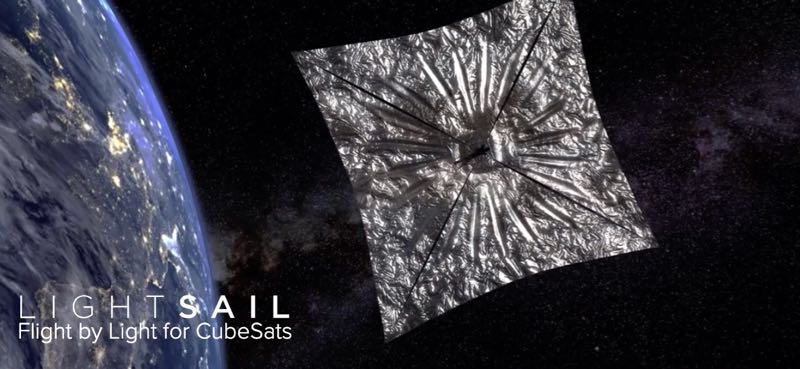Many thanks to SWLing Post contributor, Grayhat, who shares the following update to our post regarding the Lightsail 2:
Some updates about the micro-satellite; first of all, sounds like it may be possible to receive the satellite CW beacon and FSK telemetry data using an SDR and a 70cm Yagi antenna, at least according to what is reported at the RTL-SDR website:
Solar Sail Satellite Lightsail-2 Now Transmitting Morse Code Beacon
By the way, one will also need to be between 42° and -42° latitude to have some hope to pick up the satellite signal; also, the satellite now got a different NORAD ID (44339) so the N2YO tracking URL is now:
The above may be useful to track the satellite and know when to attempt receiving its signals, other than that, the mission is proceeding well and the “mission dashboard” is now active:
http://www.planetary.org/explore/projects/lightsail-solar-sailing/lightsail-mission-control.html
The only missing bit for hams willing to track the satellite status is a piece of software to decode the telemetry data, whose format is publicly available:
https://planetary.s3.amazonaws.com/projects/lightsail/manuals/ls2-beacon-info-v01.txt
Also, given that, once the satellite will deploy the solar sail, its orbit will change, I think that it would be a good idea attempting to receive it now, since later on, it may become more difficult.
Thank you sharing these tips, Grayhat. I will attempt to receive the CW signal from Lightsail 2. I do miss one crucial element: the 70cm yagi. I’m willing to bet I know a local radio friend that has one, though!
If you successfully receive the CW ID or telemetry data from Lightsail 2, please comment and share your results here. A video or audio recording would be wonderful!


Sorry, I should have added more details to my original post. On July 12 at 10:59pm CST using the WebSDR station and tracking Lightsail-2 orbit path with the Orbitron software, I monitored the 437 MHz Call Sign beacon during passing over the Johannesburg, South Africa station ZR6AIC. I missed the first few signals which started at about 437.036 MHz and shifted to about 437.023 MHz due to Doppler shift. I used CwGet software and piped the best of the recorded audio signal directly to the GwGet decoder. I was able to get almost all of the satellite beacon call sign of WM9XPA (mine – WM9XP 1).
Link to my YouTube video showing my results – https://youtu.be/UKEVp6WYpdY
I was able to record and decode the Lightsail-2 call sign beacon using a WebSDR station in Johannesburg, South Africa since my location is a little too north of the satellite path to probably pick up the signal directly. I have a YouTube video showing my results.
Long way till the “sputnik” signals !
Also, given that the beacon uses a callsign (WM9XPA), maybe it could be possible to get a QSL if one sends a reception report
QSL from space 🙂 !
Is the CW beacon an FM-modulated signal or is a true CW signal? I tried to listen to the beacon this weekend using a dual-band FM transceiver and a 7-element 70cm yagi but heard nothing.
According to the mission website, the beacon signal should be a regular CW one, so no FM